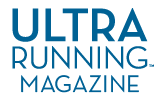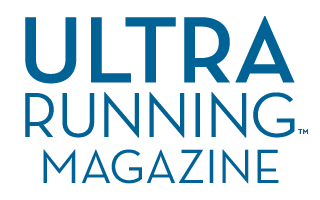Tom Mitchell, 52, started the Bigfoot 200 Endurance Run three consecutive times, but something was always preventing the Virginia resident from finishing the point-to-point race through the Cascade Mountains in Washington state.
Whether it was the heat, sleep deprivation, injury or a sick stomach, he had struggled every time. Fortunately, this year would be different.
Mitchell runs ultras purely to raise funds for the nonprofit he created in 2009 called Stillbrave Childhood Cancer Foundation. He set up the foundation after he lost his 18-year-old daughter, Shayla, to Hodgkin’s lymphoma. He doesn’t have as many races under his belt as most who would attempt a 200-mile distance, but he knew where he stood and why.
“Bigfoot 200 is arguably the toughest endurance run in North America,” said Mitchell, “I had no business being there. Children with cancer face these same situations every day, being in the hardest endurance challenge of their lives, yet they face it anyway. They have no choice. This was why I wanted to run Bigfoot.”
Mitchell was ready to take the challenge a fourth time, with all of the uncertainty from past years. As most ultrarunners can attest to, sometimes finishing requires a leap of faith.
Mitchell’s racing for fundraising started with a marathon, but he soon found himself plunged into the world of ultra, where he could best mirror the suffering children underwent in cancer treatments, in part to raise funds and bring awareness to the underfunding of pediatric cancer research, but also to help heal his own grief. He carries pictures of children with him during races, each one assigned a mile. Some survived their battle with cancer, some are in the midst of it, while others have lost their battle. He reads their names aloud at the aid stations as a memorial for some, and to inspire hope for others.
Quickly working up from his first marathon to races of longer distances, Mitchell successfully finished the Tahoe 200, and set his sights on another 200: Bigfoot.
But Bigfoot was different. The course was more challenging and remote, and the conditions were more punishing. Even though Mitchell didn’t finish, he was still able to raise funds for the foundation but he felt he had let down the families of the children he had carried with him on the journey. So he returned the next year, and the next, again and again, seeking closure. “To make good on my promise,” he said. But failing to complete a gargantuan race can take a mental and emotional toll. He needed a new approach.
Enter Loren Jewell, a 29-year-old firefighter from Fairfax County, Virginia, and a survivor of Ewing’s Sarcoma, a cancer she was diagnosed with at age 14. Her prognosis had not been good and her mother was told she probably wouldn’t survive.
After intensive chemotherapy and a hemipelvectomy in which they replaced her hip, she was told she might never walk again and if she did, she would likely suffer disabilities due to the surgery. But Jewell is a willful sort. She not only endured the rehab and physical therapy, she took the challenge head-on.
“If anything, I strived to prove the doctors wrong. Who were they to tell me what I could and couldn’t do?” Jewell said.
She had just run the Marine Corps Marathon when she heard of Mitchell’s quest to finish the elusive Bigfoot. In addition, Jewell had gone through cancer treatments at the same time and place (Inova Fairfax Hospital) as Shayla. In fact, they would be the same age had Shayla survived. It seemed serendipitous, and she thought she should run Bigfoot with Mitchell.
Having just started volunteering for Stillbrave this past summer, with plans to pilot a program aimed at mentoring children transitioning back after successful cancer treatments, Jewell thought to herself, what better way to show her cancer survivors that you can do anything you set your mind to? So, she ran the idea past Mitchell.
“Tom, I thought Stillbrave’s logo was two feathers, not one?”
She had never run an ultra, and she knew it would be tough, but she knew herself. She had conquered incredible challenges.
Mitchell was convinced to give it a shot. He figured they could push each other.
To add to the serendipity, Mitchell’s crew included Katie Elizabeth Healy, 38, a pediatric oncology nurse who cared for Jewell and Shayla as they underwent chemotherapy and follow-up treatments.
“I have kept in contact often with Tom since Shayla’s passing, as his Stillbrave Foundation has a huge presence in our clinic and among our patients, “ said Healy. “Tom and I would often talk about running once he started these endurance races because I have been a marathon runner for years. We decided I would come and help by being a pacer.”
Our other crew members included Billy Le Drew, 35, a firefighter for the City of Manassas, Virginia, and Jewell’s fiancé; Lynda Bender Poole, 55, a pediatric occupational therapist who had recently lost her 16-year-old son Charlie to cancer, as well as me and my husband.
In the Beginning
Mitchell and Jewell set off from the start with a plan to stick together for 200 miles. While they completed the first leg on the exposed landscape around Mt. St. Helens, our crew went to the first aid station we were permitted at, Windy Ridge (mile 30).
But after some time, a worried Mitchell arrived without Jewell. She had taken a bad fall in a boulder field and hurt her leg. He had to leave her at the previous aid station and press on alone. He felt terrible, but had no choice.
After we sent Mitchell on, we tracked Jewell and discovered she was continuing on. In the meantime, a severe thunderstorm had moved in, breaking with full impact just as she joined us. With lightning striking all around us on the exposed mountainside, we tried to convince her to hold out there, but she was determined to press on.
“You can’t really tell her no,” Le Drew said later, “I just asked if she was sure, then helped her on her way.”
We prepped her as best we could and sent her off into the sideways rain.
“My whole mindset was no matter what, I wasn’t going to quit,” Jewell said later.
When we arrived at the Coldwater Lake aid station (mile 46), we collected Mitchell from where he slept in the aid tent and waited and worried about Jewell. Since I was due to pace the next section, I went back to the vehicles to try and sleep.
Drifting off in the passenger seat, I thought about the nights I managed solo runs through storms; about how, with ultras, this was all par for the course. It helps to have a concrete reason to run: showing others that odds can be beaten with a shear force of will. I knew then that Jewell would be fine. Though she’d never run an ultra before, she has what it takes.
It was all of our hopes that our two runners would be reunited at some point on the trail, then we learned Jewell missed a cutoff. She’d gone 65 miles for her ultra debut, and raced mostly solo through an incredible storm. I knew she would be disappointed, but I also knew she had given it her all. I hoped she would see that this was but a first step in a long journey.
The Heroes’ Journey
After some solid rest, Jewell rallied and joined the crew. Healy had been looking after her but came back to pace, switching with me at mile 112.
Though still going strong, nights were now getting harder for Mitchell as the sleep deprivation became cumulative. It took its toll on all of us. I paced through most of the nights, and by the end, we were both feeling the burn. The trail became harder to see through a particular stretch, and Mitchell asked me several times how far we were from the aid station, doubting we were going to make it to the finish. Half asleep, I kept crunching the numbers until I became worried myself. At last we arrived, completely exhausted.
Mitchell set off early the next morning with Healy, my nighttime worries dashed as I soon tracked and found them moving well. When the crew and I met up with them at the final aid station, Owen’s Creek, we still had several hours to travel just 13 miles of road to the finish. Pacers and crew were permitted to join in the last miles, and we assembled to join the final stretch. We met at the cars for one final reading of the names of children; a list that included Poole’s son Charlie, Mitchell’s daughter Shayla and Jewell herself. No one’s eyes were dry.
A nearby crew overheard us and clapped afterwards in a touching tribute.
Bridging Communities
Healy and I headed out with Mitchell at mile 193, and Poole joined us at mile 200, her son Charlie’s mile. Jewell would meet us later on her mile, 205, on a bridge.
“To me, it comes down to the ‘why’ on the bridge,” Poole said later about how we all came together to achieve a common goal. “The cancer dad/advocate showing up for the fourth time to raise money to support kids and families with pediatric cancer. Katie, who was his daughter’s nurse (as well as Loren’s), pacing him. Me, a cancer mom, who lost the role of caregiver when my son died a year ago, now caregiving as crew. And Loren, a childhood cancer survivor, determined to show up and support her team to the end.”
Aside from our racers and crew, there was also the staff at Stillbrave posting all of the content we sent them during the race so that the parents and the pediatric cancer community could follow our journey, and the ultrarunning community cheering us on in support at every intersection.
As for Mitchell, there was finally some closure with the finish of a race he started years before.
“It was during those last 13 miles that I began to believe in myself,” he said, “To believe that I was finally, on my fourth attempt, going to finish this race. Something washed over me, as if every child I was running for was holding me close, and together we would cross the finish line.”










